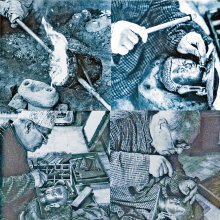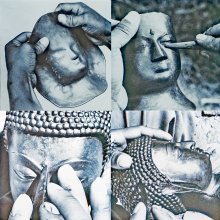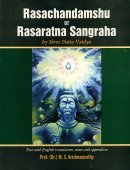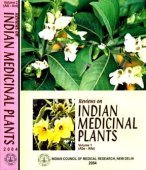Reshin, Reṣin, Resin: 6 definitions
Introduction:
Reshin means something in Hinduism, Sanskrit, biology. If you want to know the exact meaning, history, etymology or English translation of this term then check out the descriptions on this page. Add your comment or reference to a book if you want to contribute to this summary article.
The Sanskrit term Reṣin can be transliterated into English as Resin or Reshin, using the IAST transliteration scheme (?).
Images (photo gallery)
In Hinduism
Shilpashastra (iconography)
Source: Shodhganga: Elements of Art and Architecture in the Trtiyakhanda of the Visnudharmottarapurana (shilpa)Resin (i.e., fragrant gum resin) is denoted by the Sanskrit term Guggula and represents one of the various substances used in the process of creating a Canvas, in the ancient Indian art of Painting (citra), according to the Viṣṇudharmottarapurāṇa, an ancient Sanskrit text which (being encyclopedic in nature) deals with a variety of cultural topics such as arts, architecture, music, grammar and astronomy.—Canvas is a kind of surface on which a painter can draw a picture. In ancient time walls are seen to be plastered with different substances (i.e., “fragrant gum resin”) and these were prepared for Painting. [...] For the process of plastering on a wall (i.e., kuḍya or bhitti), the painter needs to mix and mingle various ingredients [viz., guggula i.e., a particular fragrant gum resin, ... etc.]. After that, the mixture should be transferred to a touch stone mortar for the process of pounding.

Shilpashastra (शिल्पशास्त्र, śilpaśāstra) represents the ancient Indian science (shastra) of creative arts (shilpa) such as sculpture, iconography and painting. Closely related to Vastushastra (architecture), they often share the same literature.
Biology (plants and animals)
Source: Google Books: CRC World Dictionary (Regional names)Resin in India is the name of a plant defined with Calamus flagellum in various botanical sources. This page contains potential references in Ayurveda, modern medicine, and other folk traditions or local practices It has the synonym Palmijuncus polygamus (Roxb.) Kuntze (among others).
Example references for further research on medicinal uses or toxicity (see latin names for full list):
· Historia Naturalis Palmarum (1849)
· Acta Phytotaxonomica Sinica (1989)
· Annals of the Royal Botanic Garden. Calcutta. (1908)
· Revisio Generum Plantarum (1891)
· Flora Indica (1832)
If you are looking for specific details regarding Resin, for example chemical composition, diet and recipes, health benefits, side effects, pregnancy safety, extract dosage, have a look at these references.

This sections includes definitions from the five kingdoms of living things: Animals, Plants, Fungi, Protists and Monera. It will include both the official binomial nomenclature (scientific names usually in Latin) as well as regional spellings and variants.
Languages of India and abroad
Sanskrit dictionary
Source: Cologne Digital Sanskrit Dictionaries: Cappeller Sanskrit-English DictionaryReṣin (रेषिन्).—[adjective] hurting, injuring (—°).
Source: Cologne Digital Sanskrit Dictionaries: Monier-Williams Sanskrit-English DictionaryReṣin (रेषिन्):—[from reṣa] mf(iṇī)n. = [preceding] (See puruṣa-r).
[Sanskrit to German]
Sanskrit, also spelled संस्कृतम् (saṃskṛtam), is an ancient language of India commonly seen as the grandmother of the Indo-European language family (even English!). Closely allied with Prakrit and Pali, Sanskrit is more exhaustive in both grammar and terms and has the most extensive collection of literature in the world, greatly surpassing its sister-languages Greek and Latin.
See also (Relevant definitions)
Ends with: Hreshin, Purushareshin.
Full-text (+366): Rala, Saraladrava, Guggulu, Guggula, Shriveshta, Devadhupa, Salana, Dhupa, Dhunaka, Bhaktakara, Kanakalodbhava, Vrikshaniryasa, Padmadarshana, Rasahva, Maharupa, Vahnigandha, Shikara, Sarvarasa, Vahnivallabha, Dhupana.
Relevant text
Search found 55 books and stories containing Reshin, Reṣin, Resin; (plurals include: Reshins, Reṣins, Resins). You can also click to the full overview containing English textual excerpts. Below are direct links for the most relevant articles:
Bhesajjakkhandhaka (Chapter on Medicine) (by Hin-tak Sik)
Medicines (f): Gum-Resins (Jatu) < [Chapter 4 - Medicinal Substances in the Chapter on Medicine]
Medicines for the Duration of one’s Life (Introduction) < [Chapter 4 - Medicinal Substances in the Chapter on Medicine]
Vinaya Pitaka (3): Khandhaka (by I. B. Horner)
On root medicince, etc. < [6. Medicine (Bhesajja)]
On the four great references < [6. Medicine (Bhesajja)]
First recitation section < [16. Lodgings (Sayanāsana)]
Indian Medicinal Plants (by Kanhoba Ranchoddas Kirtikar)
52. Podophyllum emodi, Wall. < [Berberidaceae (barberry family)]
The Bhikkhus Rules (by Bhikkhu Ariyesako)
Lifetime Medicines < [Chapter 3 - Possessions And Offerings]
The Vishnu Purana (by Horace Hayman Wilson)
Brihat Samhita (by N. Chidambaram Iyer)
Related products






